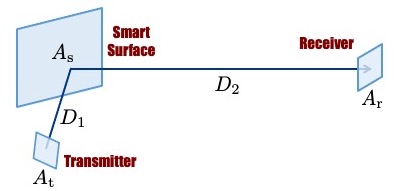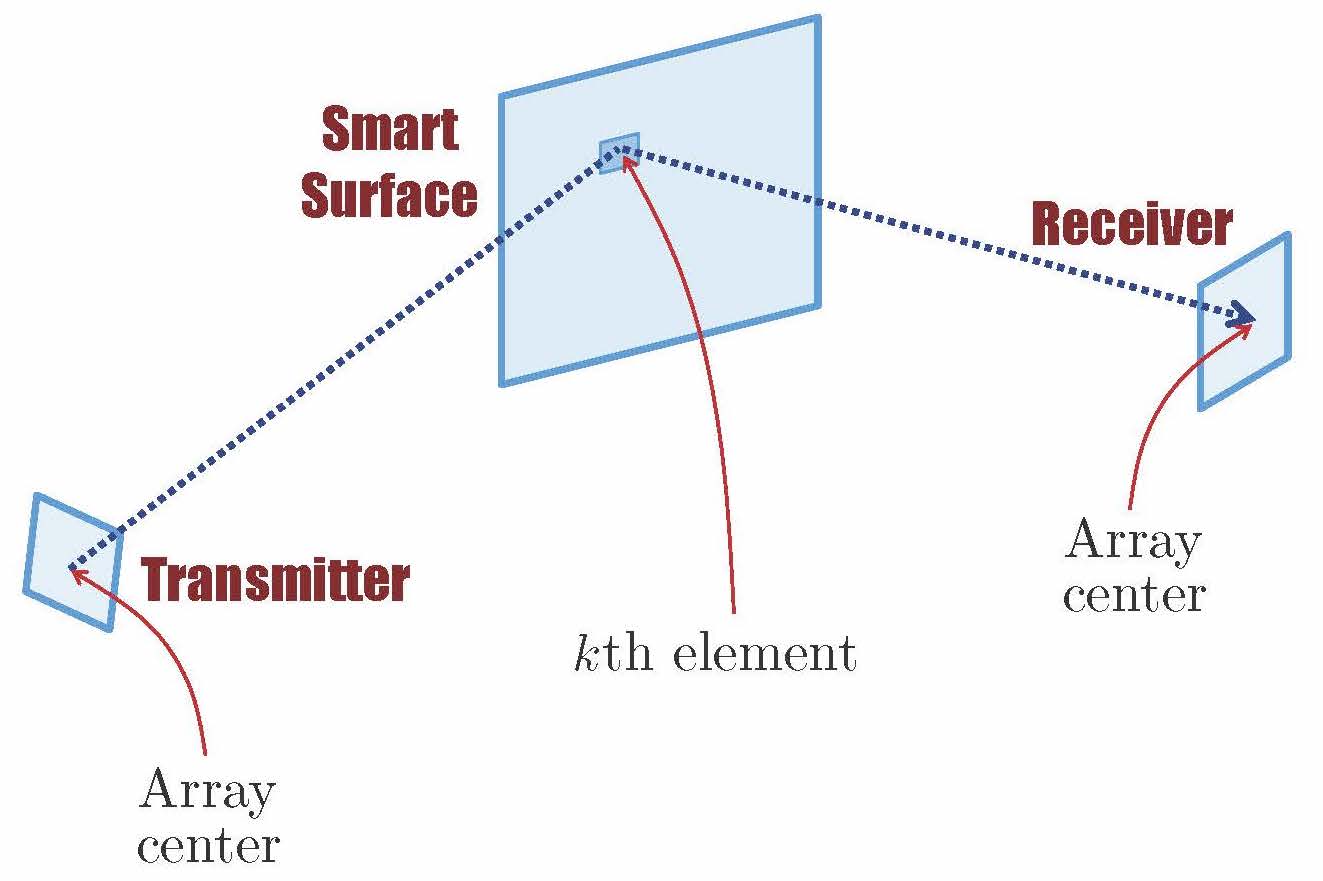Smart Surfaces
MIMO Via Smart Surfaces
MIMO Via Smart Surfaces
Intelligent surfaces, passive and consuming almost no energy, are made up of elements that can reradiate an impinging radio wave with a controllable phase shift. Their deployment will enable turning portions of the environment into a part of the...
For 6G, new frequency bands will open north of 100 GHz. At these frequencies, the Fraunhofer distance that delimits the near-field bounday can be, for reasonably sized antenna arrays, on the order of tens of meters, or even further. Given the shrinking ranges over which radio access takes place, in many applications it will become possible to operate within that boundary, i.e., in near-field conditions. This, in turn, will enable a new form of MIMO (near-field MIMO) that does not require multipath propagation. Rather, the arrays themselves will provide a large-enough aperture to resolve the signals, even in the absence of multipath, such that MIMO can take place over a line-of-sight connection. The number of signals that can be spatially multiplexed over a line-of-sight connection, what is usually referred to as the number of signaling degrees-of-freedom (DOF), equals
![]()
where At and Ar and the transmit and receive array apertures, D is the range, and λ is the wavelength.
Concurrently, smart surfaces are emerging as a form of non-regenerative relays that are passive, devoid of radio-frequency chains and baseband processing; each composing element merely reradiates the impinging wave with a certain phase shift.
The idea guiding our research here was that, because the DOF in near-field MIMO increase with the product of the transmit and receive apertures, the cascading of two such links links via a smart surface—serving as receiver for the first link and transmitter for the second one—could exhibit a number of DOF that scales with the size of such smart surface, even if the end transmitter and receiver are fixed in size. By means of some advanced mathematics we proved that, indeed, the DOF via a smart surface in near-field conditions can equal up to
![]()
where, as shown in the next figure, D1 and D2 are the respective distances from transmitter to surface and from surface to receiver while As is the aperture of the smart surface.

In addition, we also managed to identify the phase shifts that must take place at the smart surface to attain the maximum number of DOF given above. The kth element within the smart surface must apply a phase shift of
![]()

Interestingly, these phase shifts can be interpreted as having the smart surface act as a lens, which is a rather non-obvious approach. These results, derived in collaboration with Korea University and POSTECH, have been published in:
- H. Do, N. Lee, A. Lozano, “Line-of-Sight MIMO via Intelligent Reflecting Surface,” IEEE Trans. Wireless Communications, Vol. 22, 2023.
- H. Do, N. Lee, A. Lozano, "DOF Augmentation via IRS for Line-of-Sight Communication," Invited Paper at the Asilomar Conf. on Signals. Systems and Computers, Pacific Grove, USA, Nov. 2022.
